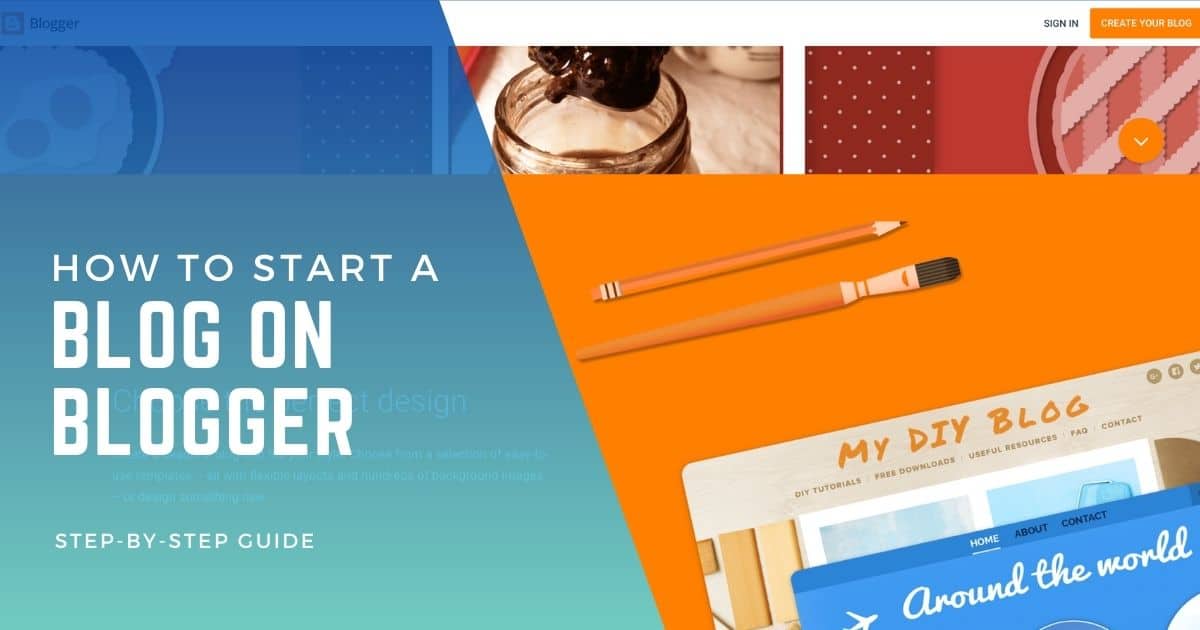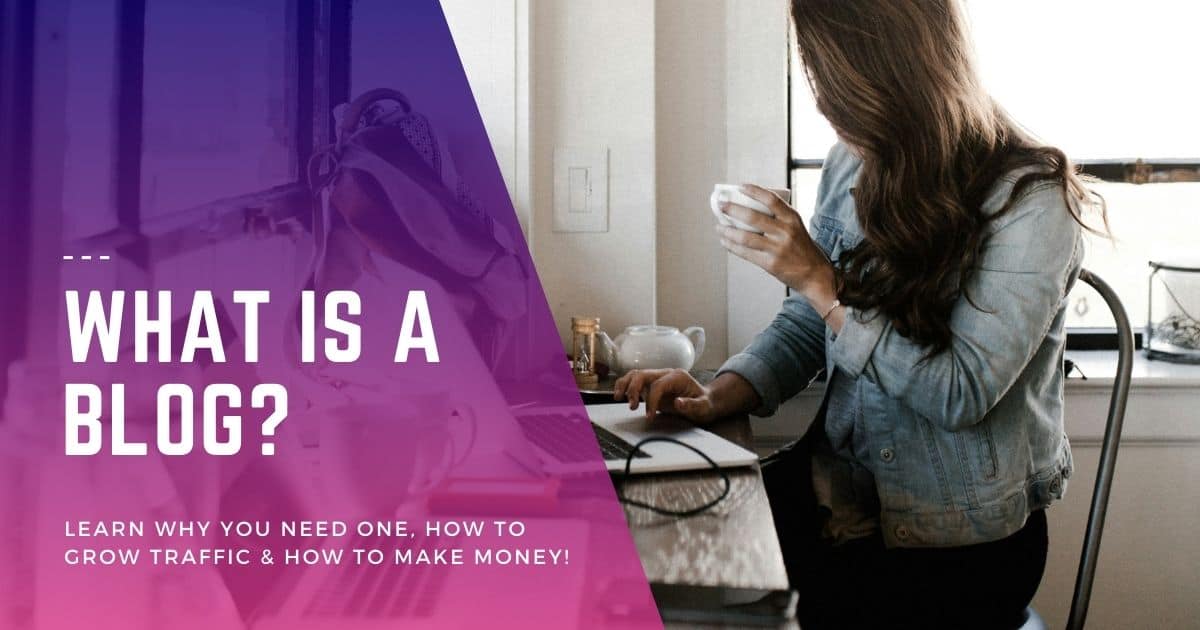Starting a blog on Blogger is straightforward. With Google’s backing, this blogging platform offers a user-friendly space for all your blogging needs, whether it’s about travel, fashion, or cooking. Blogger has been a trusted choice for bloggers since 1999, making it easier for both beginners and experienced writers to share their ideas.
Having spent years in digital marketing and blogging, I can confidently say that Blogger is a reliable choice. It’s like having a conversation with friends, but online. Your stories, insights, and experiences deserve to be shared.
Ready to begin? With the right guidance, you’ll have a blog that not only shares your voice but also connects with readers in meaningful ways and maybe turn a profit.
What is Blogger?
Blogger is a free blogging platform owned by Google. Launched in 1999, it allows users to create, publish, and host blogs without advanced technical knowledge. Blogs on Blogger have a default “.blogspot” domain, but custom domains can be used. It offers templates and customization tools for design flexibility.
Blogger vs BlogSpot
Blogger vs BlogSpot: Blogger is a free blogging platform owned by Google, allowing users to create and publish blogs. BlogSpot, on the other hand, refers to the domain service provided by Blogger. When someone creates a blog on Blogger, it’s given a default “.blogspot” domain. Essentially, Blogger is the platform, while BlogSpot is the domain service. Both are interconnected, but they serve different functions within the blogging ecosystem.
How to Start a Blog on Blogger: Step-by-Step Guide
To create your own blog on Blogger, log in to your Google account, navigate to blogger.com, click “Create a New Blog,” fill out the required details, and pick a theme that suits your blog’s style. Here are the specific steps:
- Visit Blogger: Head over to blogger.com and tap on the “Create Your Blog” button.
- Google Account Sign-In: Use your Google Account credentials to sign in.
- Blog Details: Once signed in, you’ll land on the blog creation page. Here, type in your desired blog name and URL. Remember, Blogger offers a complimentary blogspot.com subdomain. However, if you wish, you can later purchase a unique domain from platforms like Godaddy.
- Choose a Theme: Pick a theme that resonates with your blog’s vibe and hit “Create Blog!”.
- Access the Dashboard: After clicking, you’ll be taken to the Blogger dashboard. Congratulations! Your blog setup is complete.
Choosing a Domain Name and Blog Title
So, you’re ready to kick off your blogging adventure on Blogger with your Blogspot URL. That’s exciting! The initial step is picking a domain name and blog title that aligns with your brand or topic. Think of your domain name as your online address; it should be catchy and easily recalled. Before diving in, ensure you have a Google email and account.
Key Points to Remember:
- Domain Name: It’s your blog’s online address. Consider keywords that resonate with your blog’s theme, like “blogging,” “blogger,” or “URL.” For instance, a food-centric blog might benefit from words like “foodie,” “recipes,” or “culinary.”
- Blog Title: Your blog’s headline is visible on every page. It should encapsulate your blog’s essence and intrigue readers.
Selecting a Theme/Template for Your Blog
With your domain and title in place, the next step is picking a theme or template. This defines your blog’s visual appeal, from layout to fonts and colors. To start, navigate to your blog platform’s menu and select “themes.”
Blogger boasts a range of ready-to-use themes. Whether you’re into business, photography, fashion, or travel, there’s a style waiting for you. Explore until you find the right fit.
External sites offer free and premium Blogger templates if the default themes don’t resonate. These grant more customization and distinct designs. Plus, you can integrate gadgets to boost your blog’s features. Always review the license terms before using any external resources.
Customizing Your Blog’s Layout, Fonts, and Colors
Having chosen a theme, it’s customization time! Blogger’s user-friendly interface lets you tweak the layout, fonts, and colors sans coding. Dive into the options and make it uniquely yours.
Steps to Customize:
- Layout: Head to “Layout” in your Blogger dashboard. Rearrange elements like headers, sidebars, and footers with the drag-and-drop tool. Play around until it feels right.
- Fonts & Colors: In the “Theme” section, pick font sizes that echo your blog’s vibe. Opt for colors that not only look good but also ensure easy reading.
Tip: Always preview changes before finalizing to ensure everything looks and functions as expected.
Setting Up Important Blog Settings
After setting up your blog’s visual elements, it’s time to fine-tune some essential settings on Blogger for a better user experience.
Start by accessing the settings tab in your Blogger dashboard. Here, you can customize how your posts appear. Decide if you want to display the full content or just a summary for each post. Also, use labels to categorize your posts, making them easier to navigate.
Consider the following key settings:
- Comments Moderation: Activate this to review comments before publication, helping you filter out spam or inappropriate remarks.
- Privacy Options: Decide if your blog should be open to everyone or just a select audience.
- Publish Button: Once the content is ready, use this to make your post live. Always review your post one last time before publishing.
Regularly checking and updating your settings ensures your blog remains user-friendly and optimized.
Optimizing for SEO: Tips for Better Visibility
I’ll share easy steps I’ve learned to help your website rank higher on search engines.
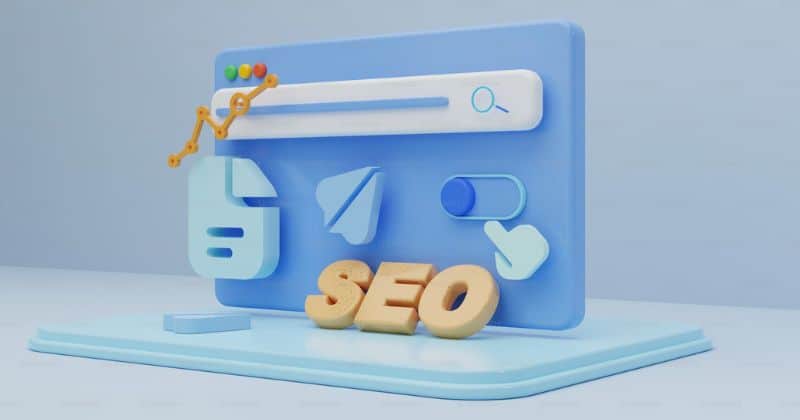
Importance of optimizing your blog posts with relevant keywords
Optimizing your blog posts with relevant keywords is crucial for improving the visibility of your blog and attracting organic traffic. Incorporating commonly searched keywords into your content increases the chances of appearing in search engine results pages (SERPs) when people look for information related to your blog’s topic. Creating keyword-rich content is essential for driving traffic and engagement.
You can use tools like Google Keyword Planner to find suitable keywords for your blogger blog. This tool lets you research popular search terms and determine their search volume. By selecting keywords like “click create blog” with a high search volume but low competition, you can target specific topics and increase the likelihood of ranking higher on SERPs. Simply click the “blog” button to get started.
Explanation of how to conduct keyword research using tools like Google Keyword Planner
When performing keyword research using Google Keyword Planner, enter a few seed keywords related to your blog post topic. The tool will then generate a list of keyword ideas along with their average monthly searches and competition levels.
Focus on selecting long-tail keywords that are more specific and have lower competition. These keywords can help you attract more targeted traffic to your blog. Long-tail keywords usually contain three or more words and target a niche audience.
Once you’ve chosen relevant long-tail keywords, incorporate them naturally throughout your blog post. Aim to include keywords in the title, headings, subheadings, and body paragraphs while maintaining readability and avoiding keyword stuffing.
Techniques for writing compelling meta titles and descriptions
Meta titles and descriptions are vital in attracting clicks from search engine users. When creating meta titles, aim to add concise yet descriptive titles that accurately summarize the content of your blog post. Include one or two primary keywords, such as create or version, within the title to improve search engine visibility.
Similarly, create engaging meta descriptions for your blog post to briefly overview what readers can expect. Use action-oriented language or ask questions to entice users to click on your link. Including relevant keywords in the meta description can also help improve search engine rankings for this version.
Tips for optimizing images with alt tags and descriptive filenames
Optimizing images on your blog is essential for SEO. When adding images, make sure to use descriptive filenames that accurately describe the image content. This helps search engines understand the image and improves its visibility in image search results.
Include alt tags for each image using relevant keywords to enhance accessibility and optimize your blog post for search engines.
Mentioning the significance of internal linking within your blog posts
Internal linking is a strategy to improve SEO and enhance user experience on your blog. By including click links within your blog posts that direct readers to create other relevant articles or pages on your website, you encourage visitors to explore more of your content.
Internal linking is crucial for a blogger blog as it helps search engines understand the structure of your entire blog. Establishing connections between related topics distributes authority and ranking power throughout your site. This can greatly enhance the visibility of individual pages in search results. To create an effective internal linking strategy for your blog, click the “create blog” button and get started.
When implementing internal links on your blogger blog, make sure to use anchor text that accurately represents the content of the linked page. Instead of using generic phrases like “click here” or “read more,” incorporate specific keywords or descriptive phrases that accurately represent the topic of your new blog. This will create a better user experience for your readers and help them navigate through your entire blog more effectively.
Creating an Engaging Blog Design: Customization and Gadgets
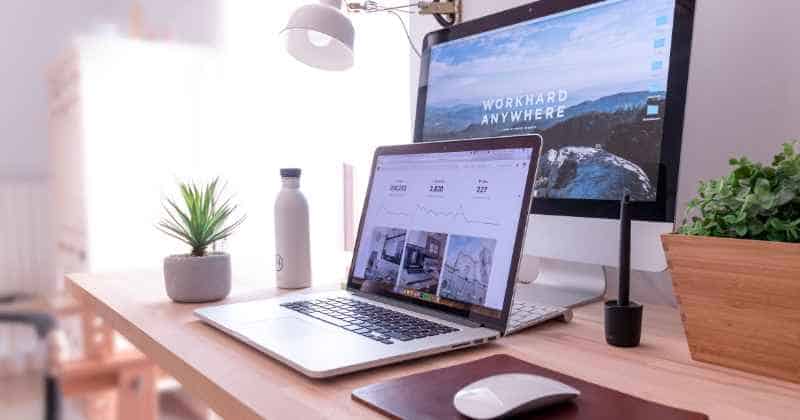
I’ll teach you how to shape your blog’s appearance using tailored design choices and helpful gadgets. These tweaks can make your site more inviting for readers.
Overview of Different Customization Options Available in Blogger
Customization is key when using this platform’s latest version. Fortunately, it offers many options to create a blog that truly stands out. With just a few clicks, you can transform the appearance and layout of your blog to reflect your unique style and personality.
One of the first customization options you’ll encounter on your blogger blog is choosing a visually appealing color scheme. Clicking on the “Customize” button will take you to a world of possibilities in the new blog version. From there, you can explore various pre-designed templates or dive into the advanced settings to create a custom color palette that matches your brand or personal preferences.
Don’t forget to click on the Blogger version to create a wide range of fonts for both headings and body text. Choosing the right combination can significantly impact your blog’s readability and overall aesthetic appeal.
How to Add Gadgets/Widgets to Enhance Functionality
Gadgets are like little magic buttons you can click to create extra functionality and interactivity on your blog. They are powerful tools that can engage your readers, increase user interaction, and provide valuable information at a glance. Adding gadgets is simple – follow these steps to click and create the version you want.
- In your Blogger dashboard, navigate to the “Layout” tab.
- Look for an area in your blogger blog where you’d like to create and add a gadget (e.g., sidebar or footer) and click on the “Add a Gadget” button to incorporate it into your version.
- A window will pop up with various gadget options categorized by different functionalities such as social media integration, popular posts display, subscription forms, and a create version button to click on for customization.
- Choose the gadget that aligns with your goals and click on it to create a version for your Blogger blog.
- Customize your Blogger blog’s settings according to your preferences, such as adding social media profile links or selecting specific posts for display. Click to create the version you desire.
- Once done, click “Save” to create and admire your newly added gadget on your Blogger blog.
Remember, consider your niche and audience when selecting gadgets for your blog. Gadgets should serve a purpose and enhance the user experience. For example, if you run a recipe blog, create a “Recipe of the Day” gadget to keep your readers coming back for more delicious inspiration. This gadget will encourage them to click and explore new recipes.
Tips for Choosing Visually Appealing Color Schemes
Colors play a significant role in creating an engaging blog design. They click with readers, evoke emotions, convey messages, and leave lasting impressions on your readers. Create a version that follows these tips to ensure your color scheme is visually appealing.
- As a blogger, it’s important to stick to a cohesive palette when creating your blog. Choose two or three main colors that complement each other well. Using too many colors can be overwhelming and distract from your blog content. So, click here to create a visually appealing version of your blogger blog.
- Consider color psychology: Different colors evoke different emotions. For instance, blue conveys trustworthiness and calmness, while red signifies energy or urgency. Think about how you want your readers to feel when they visit your blog. Additionally, create a blog version that is visually appealing and encourages readers to click.
- Test readability: Ensure the contrast between text and background colors is sufficient for easy reading on your blogger blog. Avoid using light-colored text on light backgrounds or vice versa. Click here to create a version of your blog that is more visually appealing.
- Use white space effectively on your blogger blog: White space (or negative space) on your blogger blog refers to areas without any content or design elements. It helps create visual balance and allows important elements to stand out. Click here to learn more about optimizing white space on your blogger blog. Make sure to check out the latest version of the blogger blog for additional tips and tricks.
By carefully selecting an eye-catching color scheme, you’ll captivate your audience from the moment they click and land on your blog. This will create a captivating version of your blog that keeps your audience engaged.
Writing Quality Content: Techniques for Effective SEO Writing
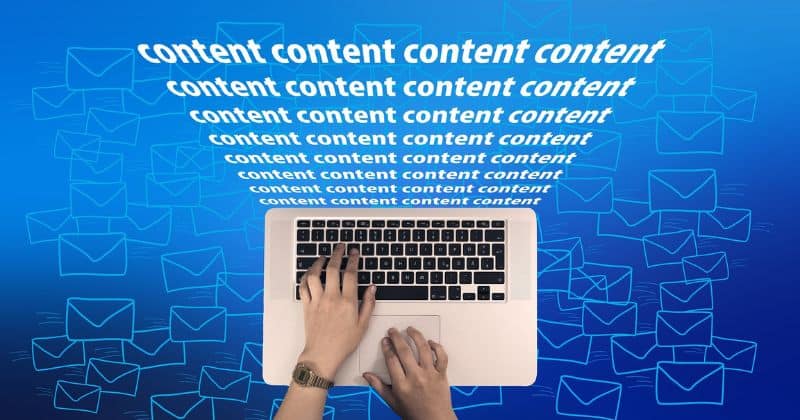
I’ll share methods to craft content that resonates with readers while boosting search engine rankings. Mastering these techniques can elevate your writing’s impact and reach.
Importance of creating original, valuable, and engaging content
One of the most crucial aspects is to create high-quality content. Originality, value, and engagement are key factors that make your blog stand out. By providing unique insights and perspectives, you can capture your audience’s attention and keep them coming back for more. So, make sure to click here to access the latest version of our blog post.
To create an original blogger blog, avoid copying or plagiarizing from other sources. Instead, conduct thorough research and provide your own analysis or interpretation of the topic at hand. This adds value and establishes you as an authority in your niche. Click here to access the latest version of our blogging platform and start creating your unique content today.
Valuable content keeps readers engaged and encourages them to share it with others on their blogger blog. To achieve this, address their pain points or answer their questions. Create practical tips, step-by-step guides, or informative articles that solve their problems. Click here to learn more about creating a version of your blog that resonates with your audience.
Engagement is another important aspect of quality content. Encourage interaction by asking questions or inviting readers to click and share their opinions in the comments section. This creates a sense of community around your blog and fosters deeper connections with your audience.
Tips for structuring your blog posts with headings and subheadings
Structuring your blog posts with headings and subheadings makes them visually appealing and helps improve readability and SEO optimization. Click here to learn more about creating engaging headings and subheadings that will enhance the overall user experience on your blog. These tips will guide you in creating a well-structured version of your blog post that is visually appealing and optimized for SEO.
- When creating a blogger blog, it is important to use descriptive headings. Clearly label each section with relevant headings that accurately summarize its contents. This will help readers navigate your blog and find the information they seek.
- Create a blogger blog and utilize hierarchy to organize your headings. Use H2 for main sections and H3 for subsections in the version you create.
- Create a blogger blog: Break up long paragraphs using subheadings to create smaller, more digestible sections.
- When creating a blogger blog, it is important to incorporate relevant keywords naturally within your headings. This helps improve your blog’s visibility and search engine optimization (SEO) without compromising clarity or readability.
- Create and maintain consistency: Stick to a consistent formatting style throughout your blog posts. This helps create a sense of structure and professionalism.
Structuring your blog posts effectively makes navigating and understanding your content easier for readers and search engines.
Techniques to optimize content length without compromising quality
Finding the right balance between length and quality is essential for any blogger. While longer blog articles tend to perform better in terms of SEO, it’s important not to sacrifice blog quality for the sake of word count. Here are some techniques that bloggers can use to optimize their blog post length without compromising on the quality of their content.
- Focus on substance: Instead of aiming for a specific word count, prioritize providing valuable information and insights on your blog. As a blogger, make sure each sentence contributes meaningfully to the overall message you want to convey.
- As a blogger, it is important to be concise in your blog posts. Eliminate any unnecessary fluff or repetitive information from your writing. Use clear and concise language that gets straight to the point. By following these guidelines, you can create a blog that is engaging and easy to read for your audience.
- Break up text with visuals: Include relevant images, infographics, or videos in your blog post. Visual elements enhance reader engagement and help break up long stretches of text.
- Use bullet points or numbered lists in your blogger blog: When appropriate, present information in a list format rather than lengthy paragraphs. This improves readability and allows readers to scan for key points quickly.
- Divide into multiple parts: If your topic is extensive, consider breaking it down into a series of interconnected blog posts.
Monetization Options: Making Money from Your Blog
Overview of different ways to monetize your blog on Blogger
So, you’ve started your blog on Blogger and are now wondering how to turn it into a money-making machine. Well, fret not! Several options are available to monetize your blog and earn some cash. Let’s dive into the different avenues you can explore:
- Google AdSense: One of the most popular options for bloggers is Google AdSense. It allows you to display ads on your blog and earn revenue based on clicks or impressions. Setting up AdSense is relatively straightforward. Simply sign up for an AdSense account and provide basic information about your blog. Once approved, you can start placing ads strategically within your content.
- Sponsored Content: Another way to make money from your blog is through sponsored content. This involves partnering with brands that align with your niche and creating posts that promote their products or services. When working with brands, it’s essential to maintain transparency and disclose any sponsored content to build trust with your audience.
- Affiliate Marketing: Affiliate marketing is a fantastic option for generating income through your blog. By joining affiliate programs relevant to your niche, you can earn a commission by promoting products or services using unique affiliate links. Whenever someone makes a purchase through one of these links, you’ll receive a percentage of the sale.
Explanation of how to set up Google AdSense for displaying ads
Now that we’ve discussed some monetization options let’s focus on setting up Google AdSense specifically for your blog.
- Sign Up: Start by visiting the Google AdSense website and signing up for an account.
- Create an ad unit: Once approved, log in to your AdSense account and create an ad unit by providing details such as size, type, style, and placement.
- Place the ad code: After creating the ad unit, you’ll receive a code that needs to be placed on your blog. In Blogger, go to the “Layout” section and add an HTML/JavaScript gadget where you want the ad to appear. Paste the AdSense code into this gadget.
- Customize ads: Google AdSense offers various customization options, allowing you to match the look and feel of your blog. Experiment with different ad formats and styles to find what works best for your audience.
- Monitor performance: Keep an eye on your AdSense dashboard to track your ads’ performance. Analyze metrics such as impressions, clicks, click-through rates (CTR), and earnings to optimize your monetization strategy.
Tips for creating sponsored content and working with brands
As a blogger, a few key tips can help you make the most out of opportunities on your blog.
- Choose relevant brands: Select brands that align with your niche and resonate with your audience. Promoting products or services that genuinely interest your readers will result in higher engagement and trust.
- Maintain authenticity: While promoting sponsored content, maintaining authenticity is crucial. Be transparent about collaborations and provide honest reviews or opinions about the products or services you endorse.
- Create engaging content: Ensure your sponsored posts are valuable and engaging for your audience.
Advanced Editing: Enhancing Your Blog’s Visual Appeal
Customizing Your Blogger Template with HTML/CSS
Ready to take your blog design to the next level? With advanced editing options, you can customize your Blogger template even further using HTML and CSS. By diving into the code, you have the power to transform your blog’s appearance and make it truly unique.
To access the advanced editing menu, navigate to your Blogger dashboard and select “Theme” from the sidebar. From there, click on “Edit HTML” to open up the text editor where you can make changes directly to your template.
Once inside the text editor, you can modify various aspects of your blog’s design. For example, if you want to change the font style or size of your post titles, locate the corresponding CSS code within the template and adjust accordingly. You can also experiment with different color schemes by modifying the main color theme of your blog.
Adding Custom Fonts, Backgrounds, and Borders
One way to enhance your blog’s visual appeal is by adding custom fonts that align with your brand or personal style. Fortunately, Blogger provides an easy way to incorporate custom fonts into your template. Simply visit a reputable font website such as Google Fonts or Adobe Fonts, choose a font that catches your eye, and follow their instructions for embedding it into your blog.
In addition to custom fonts, you can spruce up your blog by adding backgrounds and borders. A well-chosen background image or pattern can instantly elevate the overall look of your site. To add a background image in Blogger, go to “Theme” in the dashboard menu and click on “Customize.” From there, navigate to “Background” and upload an image of your choice.
Borders are another great way to add visual interest to specific elements on your blog, such as images or text boxes. Applying a border style using CSS code within the template editor can create a more polished and professional appearance.
Embedding Videos, Slideshows, and Interactive Elements
Want to make your blog more engaging and interactive? Consider embedding videos, slideshows, or other multimedia elements into your posts. Including these types of content can help captivate your audience and keep them engaged.
To embed a video in your blog post, copy the video’s URL from platforms like YouTube or Vimeo and paste it directly into the HTML editor while creating a new post. Blogger will automatically generate the necessary code to display the video on your blog.
Slideshows are another effective way to showcase multiple images or graphics within a single post. You can easily create a slideshow using HTML/CSS code or utilize third-party tools to integrate slideshows into your Blogger template.
Consider incorporating interactive elements such as polls, quizzes, or social media feeds to encourage reader participation. These features make your blog more dynamic and foster a sense of community among your audience.
The Role of Responsive Design in Improving User Experience
In today’s mobile-centric world, ensuring your blog is optimized for different devices and screen sizes is crucial. This is where responsive design comes into play. Responsive design ensures that your blog adapts seamlessly to various devices, providing an optimal viewing experience for every visitor.
Final Thoughts on Starting a Successful Blog on Blogger
In wrapping up, understanding How to Start a Blog on Blogger is more than just setting it up. It’s about optimizing for search engines, crafting engaging designs, delivering quality content, and exploring monetization avenues.
Remember, every detail counts, from SEO techniques to the visual appeal. So, are you ready to embark on this blogging adventure? Dive in, and let your voice be heard.
FAQs
Can I make money from my blog on Blogger?
You can monetize a blog on Blogger. Various methods include affiliate marketing, sponsored posts, and displaying ads through Google AdSense. Consistent, high-quality content and traffic growth enhance earning potential. It’s essential to adhere to Blogger’s monetization policies for successful revenue generation.
How important is SEO for my blog on Blogger?
SEO is vital for a blog on Blogger. It enhances visibility in search engine results, driving organic traffic and expanding audience reach. Proper SEO practices, including keyword optimization and quality backlinks, directly influence a blog’s success and reader engagement on the platform.
Can I customize the design of my blog on Blogger?
Blogger allows design customization. Users can modify templates, adjust layouts, and integrate custom CSS. Blogger provides both pre-designed themes and tools for personalized design, enabling bloggers to tailor their site’s appearance to their preferences while maintaining a user-friendly interface.
Do I need to be an expert writer to start a successful blog on Blogger?
No, expertise in writing isn’t mandatory to start a blog on Blogger. Success often hinges on authenticity, consistent content, and audience engagement. While strong writing skills can be beneficial, passion for the subject and a willingness to learn and adapt are equally crucial for blogging success.
Is it possible to change the look of my blog after setting it up on Blogger?
You can modify your blog’s appearance on Blogger even after initial setup. The platform offers tools to change templates, adjust layouts, and incorporate custom design elements, ensuring flexibility for users to periodically refresh or overhaul their blog’s visual presentation as desired.
